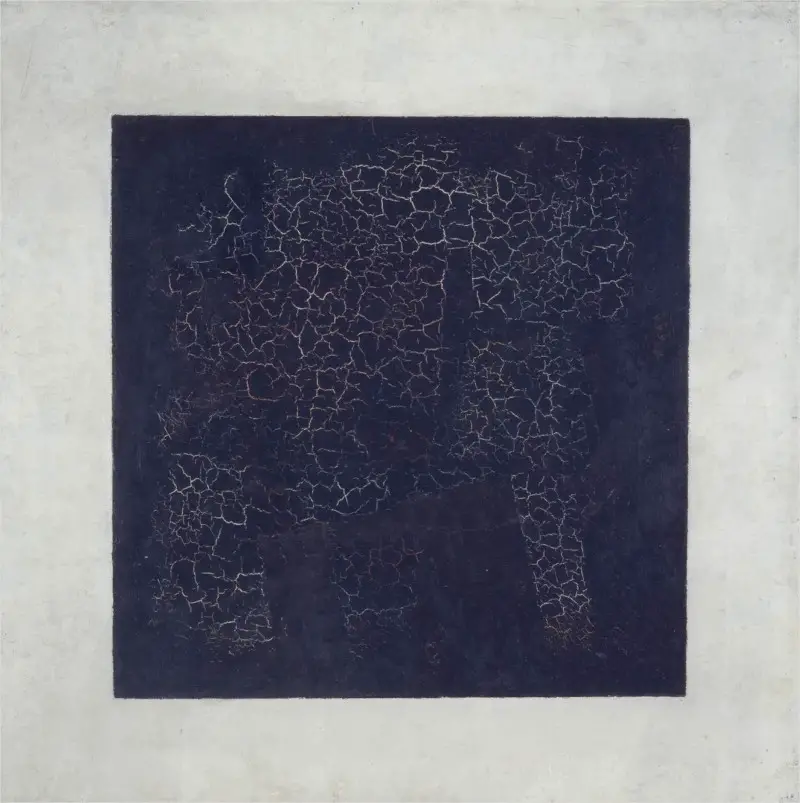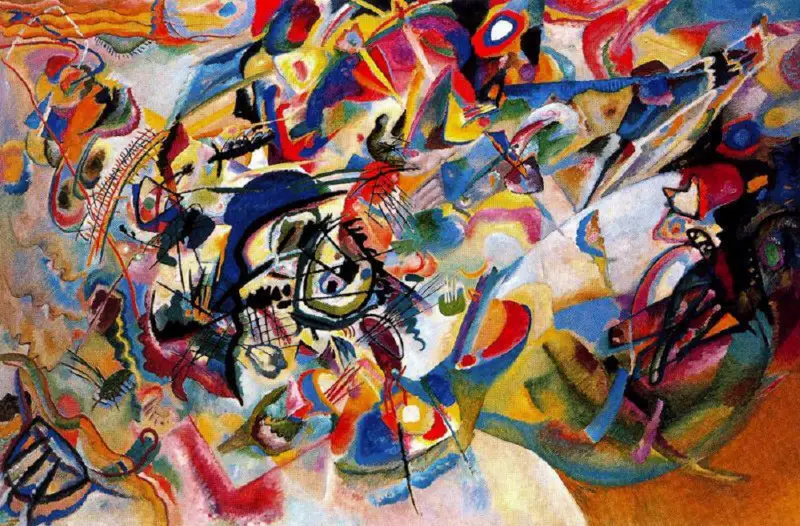Modern artists remain the most popular in all western art history, and here we examine some of the most famous and influential modern artists.
Introduction to Modern Art
Modern art rose in the 20th century and continues to evolve today. It is best known for its use of abstraction, but many different styles can be categorised under the single banner. Modern art allowed a more democratic art world to emerge, where it was not necessary to go to particular art schools or institutions in order to succeed. One could also paint more expressively, and not have to follow what had gone before in quite the same way.
Color became key, with details reduced, and viewers found this style to be more accessible. Over time, modern artists would spread into a wide gamit of materials, with mixed media proving popular in the second half of the 20th century, perhaps inspired by some of the work of the Cubists. Today, many new offshoots continue to occur, with technology and digital art likely to shape future iterations of mdoern art more significantly.
List of Famous Modern Artists
The list below captures seventeen of the most famous modern artists, and within that are a number of painters who were not specifically part of the group, but helped to shape its direction through their earlier innovations. This list focuses on painting, but of course modern art spread to many other art forms. It is focused in this way in order to be concise, though sculpture, film and mixed media were also important parts of the modern art evolution.
Many of the modern artists have images of their paintings listed alongside, and all feature short summaries of their work, and how the influenced modern art. Most of the names listed here are amongst the most famous in art history, underlining the massive impact made by modern art and its continued success even today, with younger generations tending to appreciate its qualities most of all.
Wassily Kandinsky
Wassily Kandinsky evolved his style over time and eventually became a highly abstract painter, making use of complex arrangements of squares and circles. His use of color was key, and within little detail in his work he understood that he use of color in different combinations would be all the more important. Some of his best known works included Composition VII and Composition VIII, but earlier in his career there were also some charming, expressive modern art landscapes and cityscapes which are also highly regarded by the public.
Kandinsky was Russian-born but found it easier to succeed in the West, who were more open to creativity at the time. Politics would force a number of East European artists to relocate several times, and eventually many found their way to the US, which was shielded from many of the political issues that appeared across Europe in the 20th century. Kandinsky was a color theorist who wrote several publications on the use of color in different combinations, and this impacted his work significantly.
 Composition IX by Wassily Kandinsky
Composition IX by Wassily Kandinsky
Pablo Picasso
Pablo Picasso's oeuvre spanned a number of different contemporary art movements, and also inspired many more. He is perhaps best known as a Cubist, but also covered Surrealism, forms of Abstraction, and also African art, as well as classical European art. He was a creative genius, able to create form from a single line of pencil, in a manner few could match. He was never going to be someone that would allow creative restrictions, and was therefore the ideal candidate to help promote the qualities and possibilities of modern art.
Picasso remains the most famous artist of all time, of any style, nationality or period, and his work retains its popularity as much today as ever. His long life also allowed him to draw in many inspirations, as he saw new ideas appear from one decade to the next, though he was always much more of an innovator than some who followed. His career is perhaps the hardest to summarise, because of the variety found within it, though his legacy remains exceptionally strong today.
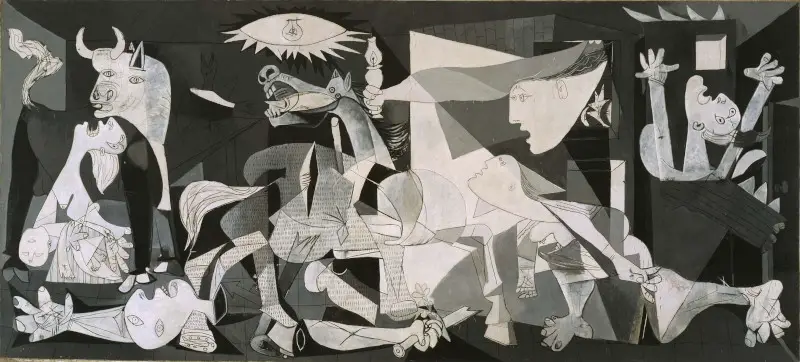 Guernica Modern Art by Pablo Picasso
Guernica Modern Art by Pablo Picasso
Jackson Pollock
Jackson Pollock used his drip painting technique to produce large murals of expressive art. He wsa typical of the modern art approach, avoiding the depiction of elements from reality and instead creating new worlds in which the viewer could immerse themselves. Color became key, and Pollock experimented with different effects by varying his application of paint to paper which would be laid across the floor. He is regarded as a key figure in American Abstract Expressionism and is a household name when it comes to the history of Modern Art.
New York would drive Modern Art in the second half of the 20th century, and still today retains this leading role in western art. Pollock was a unique character who played his role in establishing American art as a leading force, and his popularity continues today, with many appreciating his work some decades after his death.
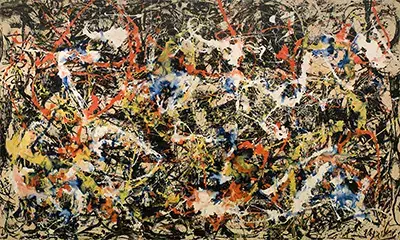 Convergence Drip Painting by Jackson Pollock
Convergence Drip Painting by Jackson Pollock
Henri Matisse
Henri Matisse was a master of color, as shown in his time as a Fauvist. Matisse loved to reduce figures down to simple lines and shapes, and late in his career he even produced work using only a pair of scissors, which was forced by ill health. These became known as his cut-outs, and were another avenue of expression to be found within 20th century modern art. The Frenchman held a relatively unique approach, enabling his work to forge a particular style which can immediately be identified as his own.
The artist also produced a number of indoor scenes, though in a manner which had never been seen before, with extraordinary colors which drew criticism and praise in equal amounts. He is today regarded as one of the most gifted modern artists and someone who rose above the achievements of other Fauvists to be considered more for his own merits, rather than as part of a group. Further notable works included Icarus and Open Window.
Mark Rothko
Rothko was a master of abstract murals, producing large paintings that would cover the entire viewport, engulfing us in color and expression. Like many modern artists, Rothko was trained to paint in more traditional styles, but simply chose not to. He alternated color across his lozenges of tone, always choosing from a relatively small palette, and normally working in a vertical format. Rothko became one of the most famous modern artists and was part of the American Abstract Expressionist group which was highly significant within the US, particularly out of New York City.
Modern art is closely linked to the rise of abstraction within art, and Rothko played a major role within that. He wanted to specifically separate his painting from any identifiable content, so that the viewer would be forced to think for themselves. His titles were also vague for this same reason, avoiding leading the viewer by leaving his work untitled or simply numbered. His use of color and abstraction continues to be popular today and he helped establish New York as the global center for western art.
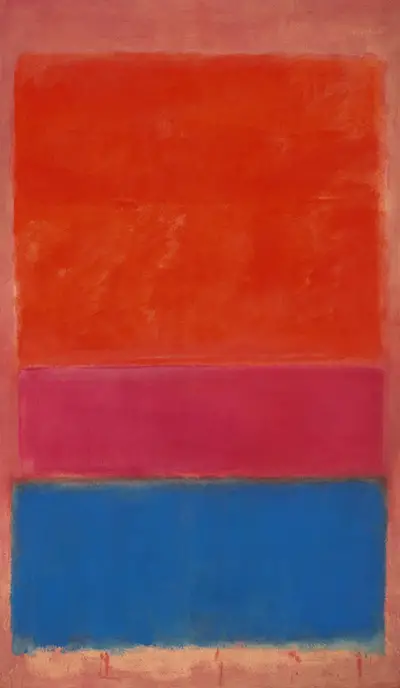 No 1 Royal Red and Blue Abstractionism Art by Mark Rothko
No 1 Royal Red and Blue Abstractionism Art by Mark Rothko
Salvador Dali
Surrealism artists are often classified within Modern Art, and the most significant of them was Salvador Dali. He re-arranged elements from reality into unusual combinations in a manner which resembled dream-like thoughts, inspired by the sub-conscious mind. Dali was a key member of a group which sought to reject traditional artistic methods and find new ways of expressing themselves, which included art without conscious thought, including automated drawing. Dali was a larger-than-life character who attracted attention to the movement, but his independent mind made it hard for him to work alongside others for long.
Dali created a number of symbols that he repeated several times, including bees, elephants and also melting clocks. He was technically gifted, and therefore perfectly able to deliver his unusual ideas in a polished manner, eventually evolving his ideas into other art forms and disciplines including jewelry, film and sculpture. He remains regarded as one of the most famous modern artists in history.
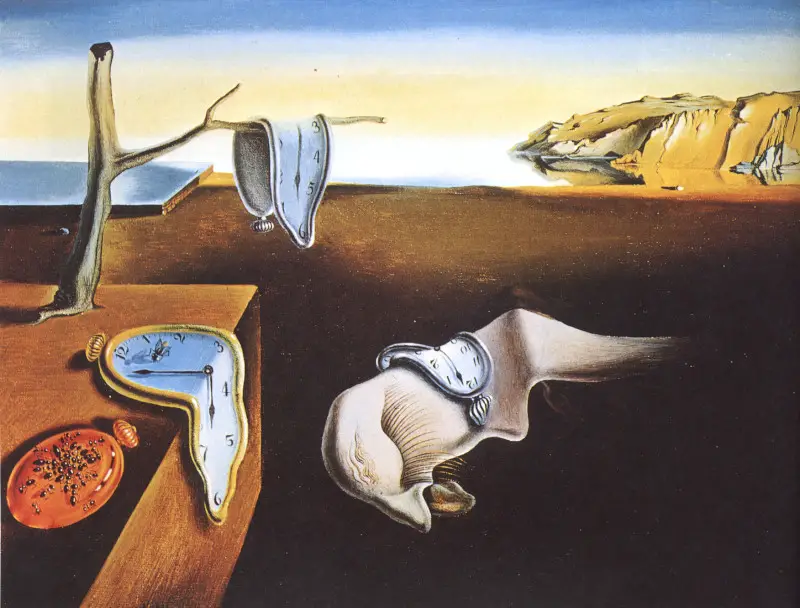 The Persistence of Memory - Famous Surrealist Painting by Salvador Dali
The Persistence of Memory - Famous Surrealist Painting by Salvador Dali
Vincent van Gogh
This extraordinary Dutchman became part of the Post-Impressionist era which pushed European art onwards, eventually evolving into the modern art forms that we enjoy today. Van Gogh was all about expression, which became a fundamental part of 20th century art. He would only loosely depict form, in a manner which was too contemporary for most to understand or appreciate, but today Van Gogh remains one of the best loved artists to have emerged from the 19th century. His landscapes combined color and emotion, with a child-like style that is immediately accessible.
Few can forget masterpieces such as Starry Night and Sunflowers, and despite having a relatively short career, Van Gogh was able to deliver a huge amount of work due to his incredible productivity and desire to keep painting. Much of this was due to his mental issues which painting helped to calm, and sadly they would eventually prove too much for him to bare, bringing his career, and his life, to a premature end.
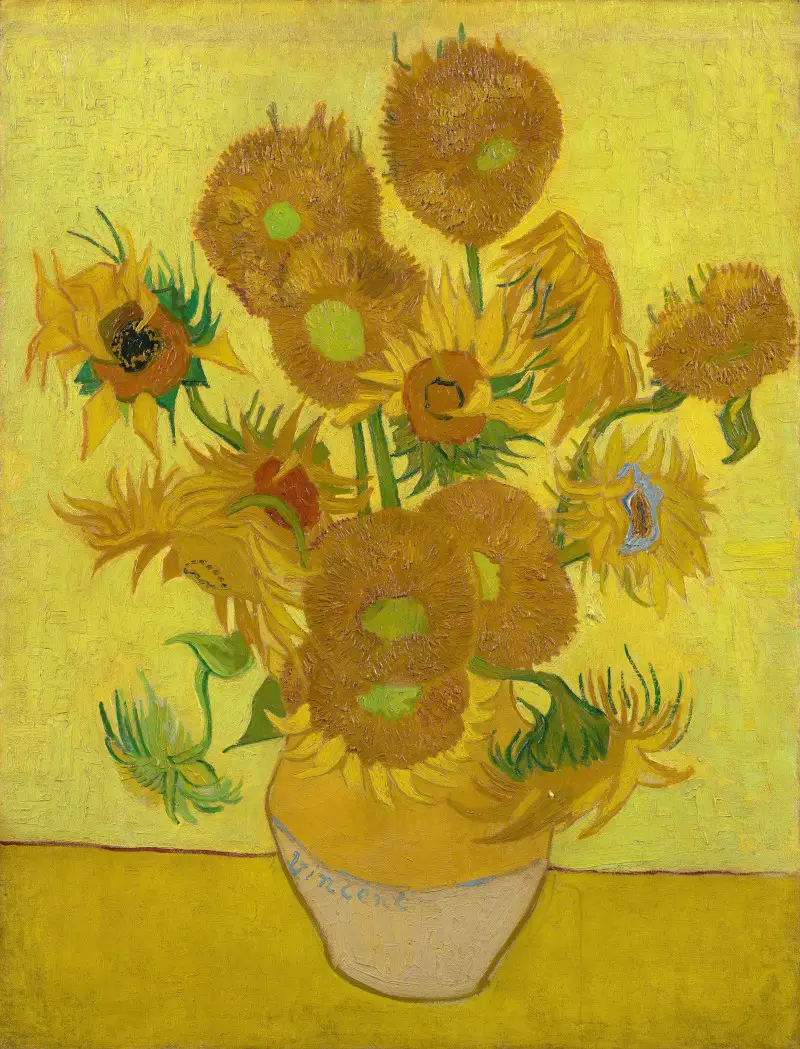 Vincent van Gogh's Sunflowers - Famous Post Impressionist Painting
Vincent van Gogh's Sunflowers - Famous Post Impressionist Painting
Paul Cezanne
Whilst not strictly a Modern artist, Cezanne is worthy of inclusion in this article because of his highly significant impact on the rise of Modern Art. He is seen by many as the link between the Impressionists and 20th century art, particularly the Cubism artists, but also Expressionists and the earlier Post-Impressionists. Cezanne evolved his style over time, and whilst working alongside the Impressionists, his work started to become fragmented as he experimented with angles in a manner which the Cubists evolved several decades later.
This was an artist with a prickly personality who did not easily get on with others. Perhaps this is how his independent artistic style was fostered, and after moving out to the countryside he would apply his modern ideas to landscape painting in a manner which still feels relatively contemporary today. He remains one of the most famous French artists of all time, and a highly significant contributor to 19th century art, perhaps the most significant of all. He also produced still life paintings and helped to refresh this traditional genre.
 The Card Players by Paul Cezanne
The Card Players by Paul Cezanne
Georgia O'Keeffe
Georgia O'Keeffe was a Modernist artist who became known as one of the most famous female modern artists. She was an American painter who produced abstract studies of flowers, as well as arrangements of animal bones. She also worked on a number of cityscapes, and her style was bright and contemporary, helping her work to remain popular today. Georgia was also interested in photography, and posed for many photographs in artistic postures.
O'Keeffe was a creative woman who was able to focus on close ups of flowers which created abstract forms of color which moved on from the beauty of the plant into new compositions. Traditionally, still life paintings of flowers had been relatively simplistic in composition, but O'Keeffe was able to breathe new life into this genre, which was a key part of modern art. Her work can be described as truly unique in style, and a museum continues to represent her legacy today.
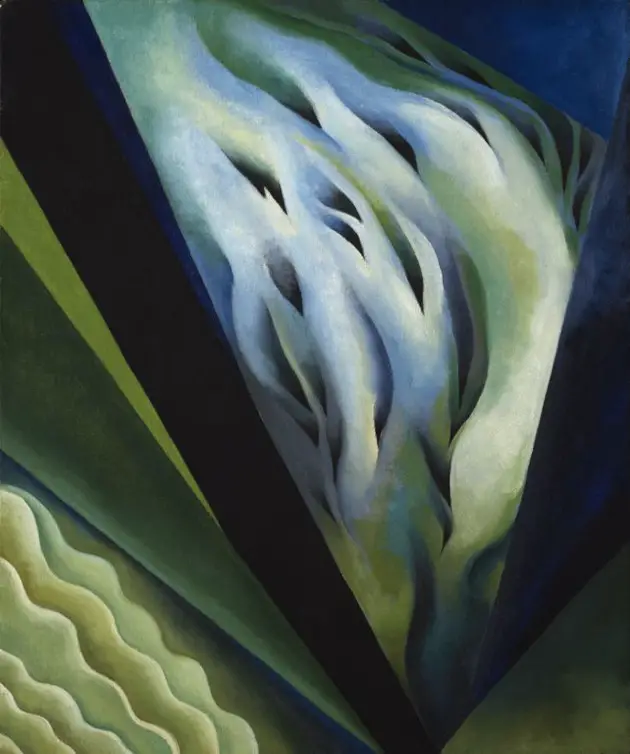 Blue and Green Music, American Modernism, Precisionism
Blue and Green Music, American Modernism, Precisionism
 Series 1, Number 8 by Georgia O'Keeffe
Series 1, Number 8 by Georgia O'Keeffe
Georges Braque
Georges Braque was a key member of the Cubist movement, which was an early iteration in the movement towards abstraction. His famous works covered different formats of Cubism which was a short-lived, but highly significant movement that would later include offshoots such as Analytical Cubism, Synthetic Cubism and Tubism, with Braque being joined by the likes of Picasso, Fernand Leger and a number of others. Angles were explored within the movement, with Cubism attempting to draw some of the benefits of sculpture into two dimensional art.
Braque continued to work in this manner, even as others left the Cubist group and attempted other modern art styles. He remained loyal and took this approach just as far as he could, becoming one of its leading exponents along the way. Braque can therefore be considered an important influence on modern art, with a strong legacy for work in the 1910s, when Cubism was at its strongest.
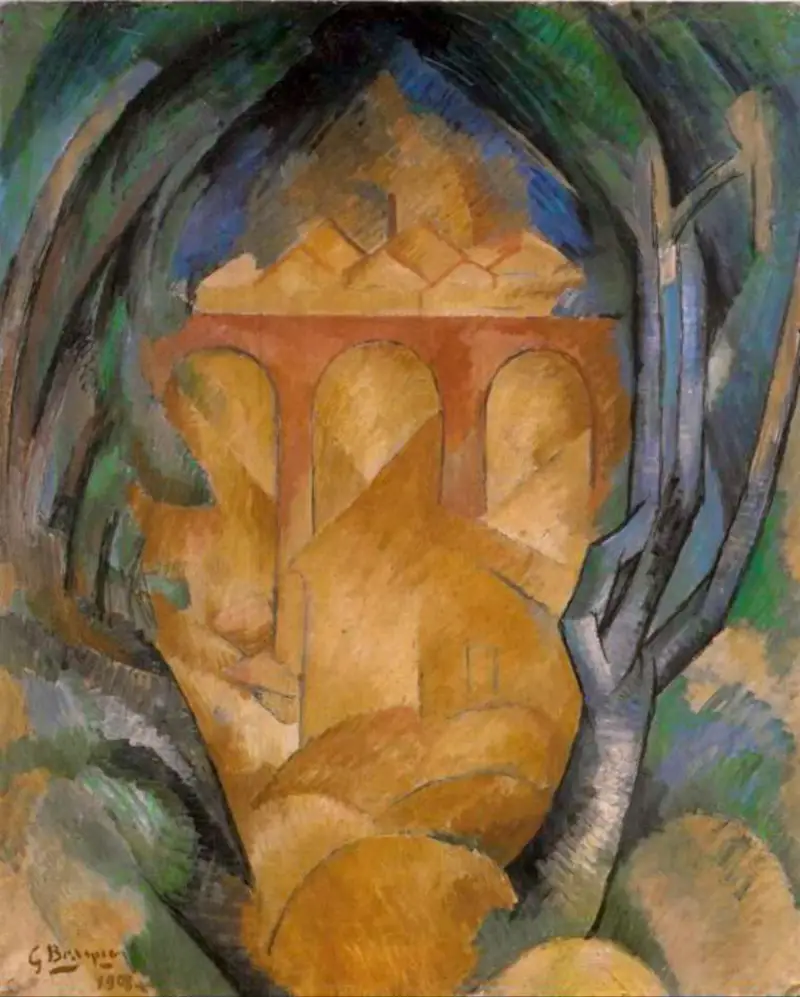 Viaduct at L'Estaque George Braque Landscape Cubism Painting
Viaduct at L'Estaque George Braque Landscape Cubism Painting
Frida Kahlo
Frida Kahlo needs little introduction. The most famous female modern artist, and an extraordinary Surrealist to boot, her reputation continues to soar today after she was installed as a feminist icon. Her life was challenging in the extreme, but her spirit won out, and she continues to provide inspiration to countless artists, and non-artists, today, and likely into the future. Her art would provide solace and expression, and she produced large numbers of self portraits which help us to learn more about this complex, emotional women.
She would represent Mexican art with pride, and achieved considerable success alongside her husband, Diego Rivera. They combined elements of native art with western influences and their use of bright colors perfectly captured the essence of life in Mexico. She captured still life arrangements of exotic fruit, animals as well as a number of portraits of friends and family, though her self portraits remain her best known body of work.
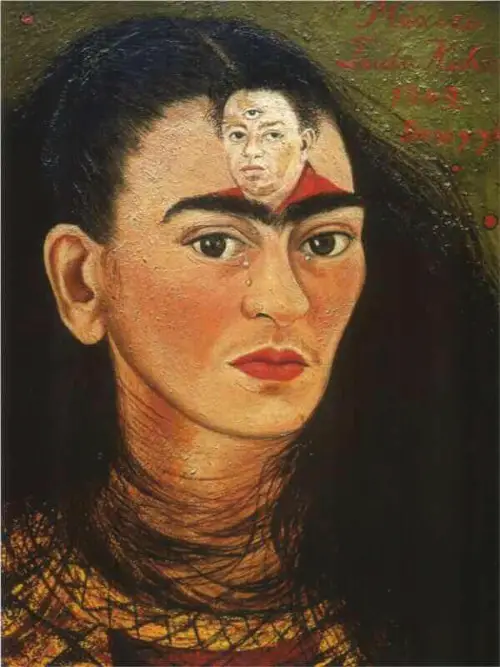 Diego and I by Frida Kahlo - Famous Surrealist Female Painter
Diego and I by Frida Kahlo - Famous Surrealist Female Painter
Jean-Michel Basquiat
Jean-Michel Basquiat was a graffiti artist from the US who became the most famous African American modern artist. He tackled social themes within his work and combined influences from western artists, as well as his own background. His extraordinary skill and imagination helped to establish graffiti art as a respected genre for the first time, and brought it into the modern art sphere. His work, thanks to a unique viewpoint within the white-dominated art scene, allowed the public to better understand alternative opinions and helped spark debate on a range of social issues.
Basquiat today remains much loved, with exhibitions of his work drawing large crowds all across the western world. His strongest legacy may have been in bringing more attention to art within his community, giving opportunities to others who otherwise may have been rejected, as was the case in previous decades. This evolution continues today, bringing a wider variety of art into curated exhbitions and, eventually, permanent collections.
Marcel Duchamp
Marcel Duchamp was connected to Cubism, Dada, and conceptual art and achieved success as a painter and sculptor. His family had a background in the arts, but it was he who achieved the most fame. Few can forget his re-use of a toilet, which spread opinion on what constitutes art. He was another example of how deep thought would enter the art world in the 20th century, with art moving beyond mere replication during this era, with all manner of messages being delivered through symbolism.
Keith Haring
Keith Haring was a Pop Artist who is famous for his cartoon-like depictions in which figures are represented by simple lines and color. Even today, his work feels entirely contemporary and it was rare to see this style within formal art circles, when previously it would be more related to the printed press or television. His work was another example of the opening up of opportunities and styles in 20th century art, with different approaches welcomed, as also found with the likes of Basquiat, Rothko and Pollock.
Many view Haring's work as inventive, but also fun, offering something different to the stale, as some people would view them, works from more traditional times. Similar would be found with the likes of Roy Lichtenstein, where commercial art and illustration would start to overlap. Haring remains regarded as one of the most popular American 20th century artists.
Joan Miró
Joan Miro produced a iconographic series of symbols which he stretched across painting, drawing and sculpture. These were abstract shapes which he combined with bright color to excite 20th century audiences. Miro's background in Spain influenced this bright palette, and he would cover birds and elements of constellations within his abstract art. The achievements of artists like Miro helped the next generation of modern artists to flourish, be it in the US or Europe.
Bleu II and L'Oro dell' Azzurro provide some of the best examples of this abstract approach, where reality was only loosely connected to. As his reputation soared, Miro was commissioned to produce large outdoor installations which continued his brand by extending these shapes into the third dimension, and also allowing the wider public to view his creations without visiting art exhibitions.
David Hockney
David Hockney is a gifted Pop Artist whose approach has brought him success for many decades. Most popular of all are his landcape paintings, capturing the beauty of the British landscape, though he also produced some charming portraits earlier in his career. Hockney has continued to innovate throughout his lifetime and despite his old age recently produced a whole series of landscape paintings on a tablet device, and exhibited them to critical acclaim. He has therefore shown the possibilities that exist within digital art, but remains an oil painter first and foremost.
Hockney's work has proven particularly popular with the public, perhaps because of his ability to tackle traditional art topics, such as landcape scenes, but from within a modern style, with bright colors often being used. He remains one of the most famous British artists in history, and continues to treat us to new and exciting work due to his high work ethic and persistent desire for expression and experimentation.
Banksy
Banksy is a British stencil artist who has become one of the most famous modern artists. His work often carried themes of activism and politics, with a strong lean to the left. His unique approach and secretive nature has ensured that a cult like atmosphere has developed around his career, leading to extraordinarily high prices being attributed to his work. He continues to produce pieces globally, though mainly in his native UK, and each new piece drives considerable press exposure.
The artist is likely to have been inspired by earlier street artists who appeared in the second hald of the 20th century, most of whom were based in the US. Banksy's work is as accessible as anything one could imagine, and despite his desire to retain his privacy, his reputation has made him one of the most famous modern artists of our time.



